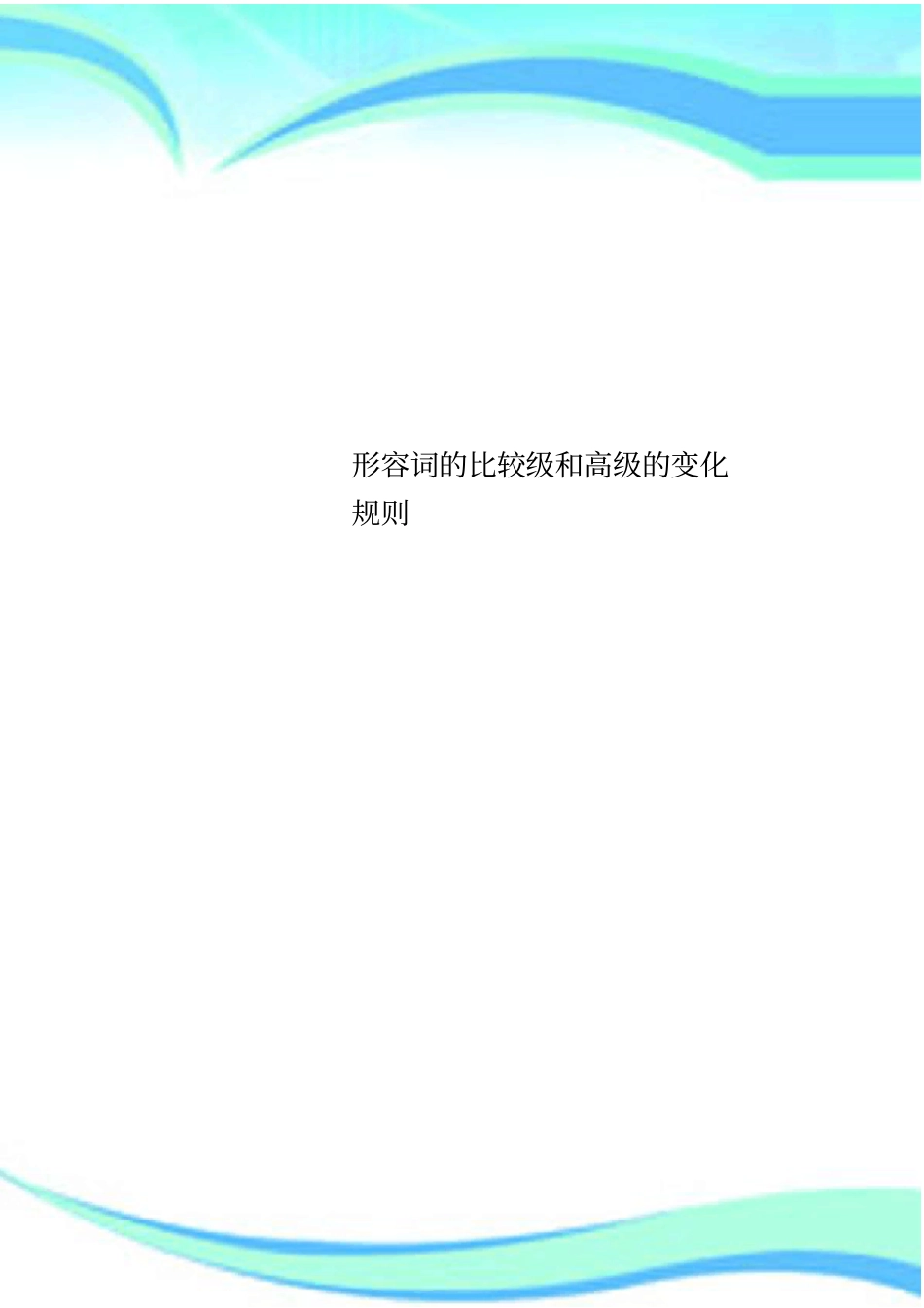形容词的比较级和高级的变化规则2 ————————————————————————————————作者:————————————————————————————————日期:- 3 - 形容词比较级和最高级的变化规则:1、一般直接在词尾加er/est: 如 tall— taller— tallest. great strong quick long fresh few tall 2、以 e 结尾的单词 去 e 加 er/est: 如 wide— wider—wid est. nice brave fine strange late wide 3、以辅音字母加y 结尾的单词, 把 y 变为 i,再加 er/ est: 如 busy—busier—busiest. lazy ugly happy lucky healthy busy 4、以重读闭音节结尾且末尾只有一个辅音字母的单词,双写末尾的辅音字母, 再加 er/ est: 如 big—bigger—biggest. fat red thin hot wet 5、部分双音节词, 多音节词 在词前面加more 或 most(比较级 more + adj; 最高级 most + adj): 如 serious— moreserious— most serious. interesting delicious carefully popular careful useful dangerous beautiful important terrible active serious 6、不规则变化:good / well —better —best. bad / ill —worse— worst. many / much —more —most. little / few — less— least. far— farther / further — farthest / furthest. - 4 - 写出下列词的比较级和最高级原级比较级最高级great __________ __________ nice __________ __________ lazy __________ __________ fat __________ __________ serious __________ __________ good/well __________ __________ bad/ill __________ __________ interesting __________ __________ big __________ __________ busy __________ __________ wide __________ __________ tall __________ __________ strong __________ __________ brave __________ __________ ugly __________ __________ red __________ __________ delicious __________ __________ many/much __________ __________ carefully __________ __________ popular __________ __________ - 5 - litter/few __________ __________ thin __________ __________ happy __________ __________ careful __________...


